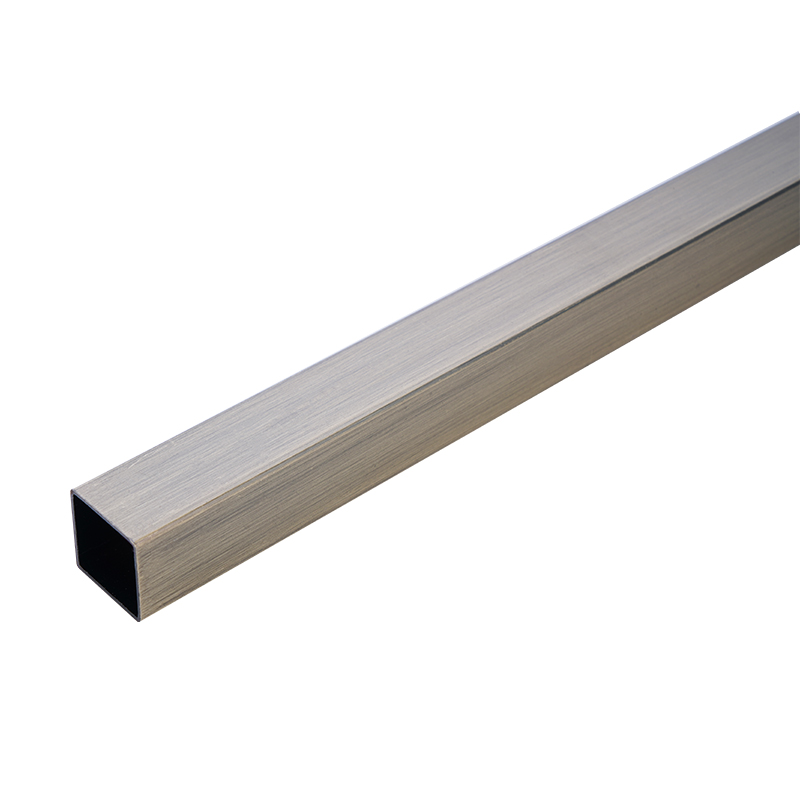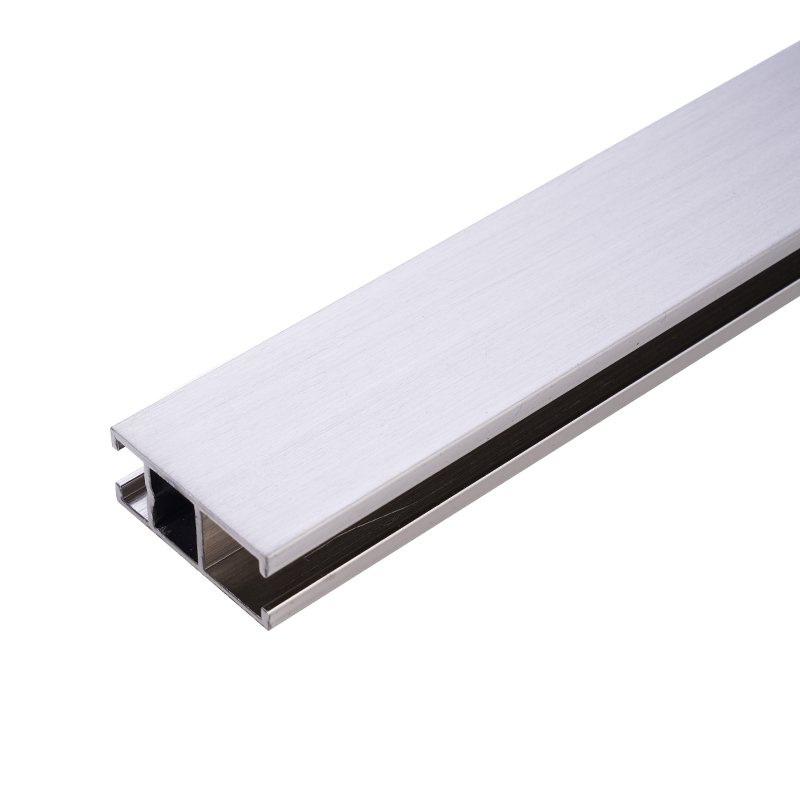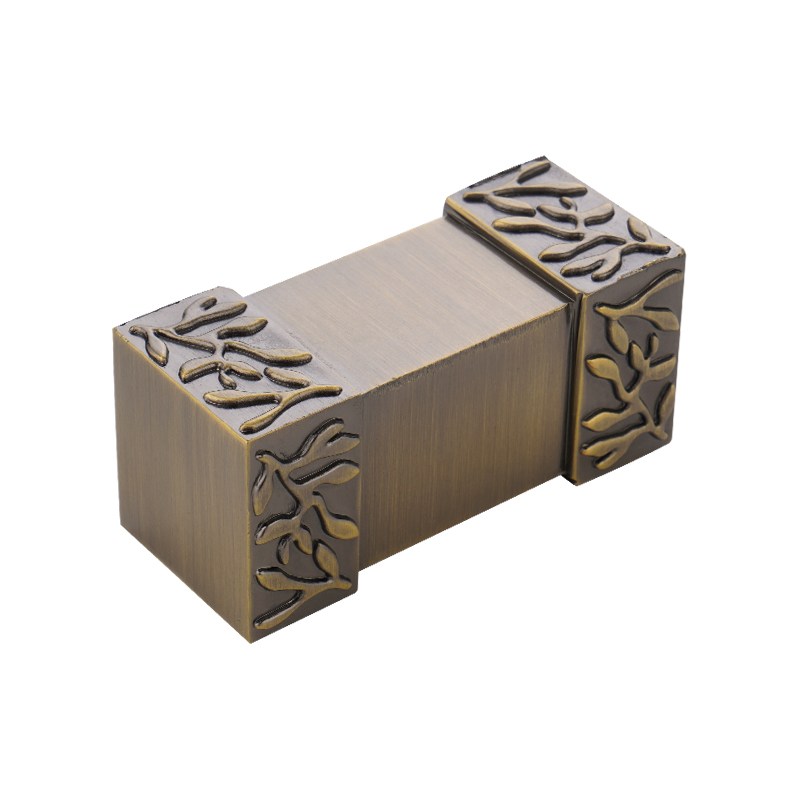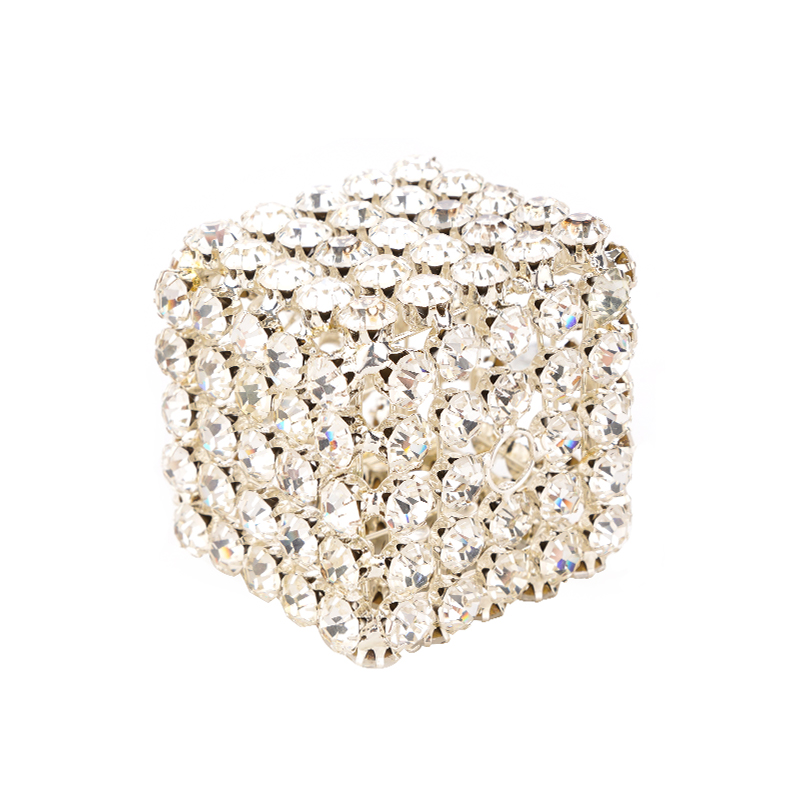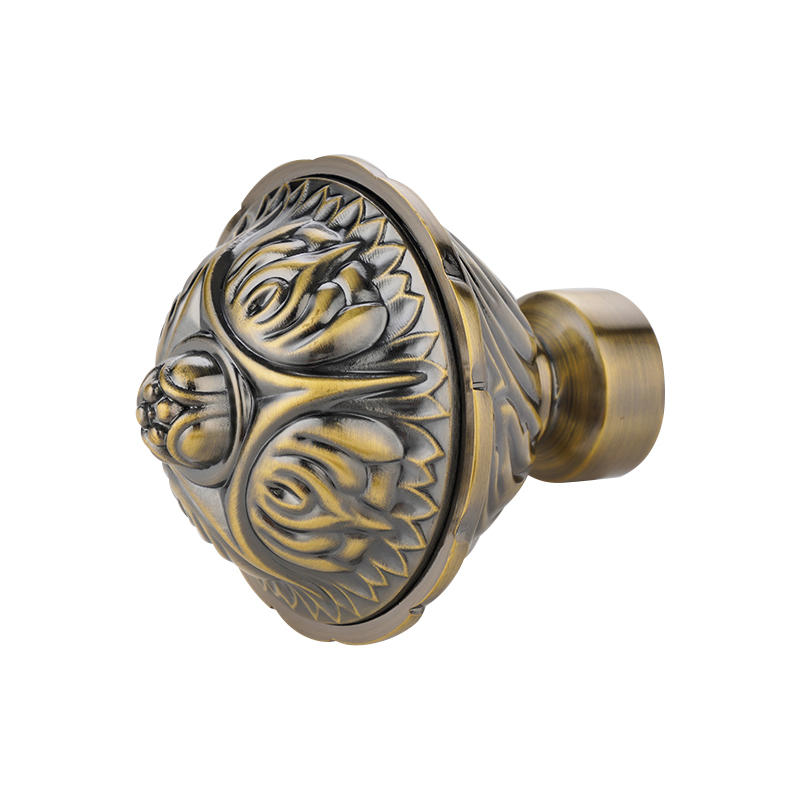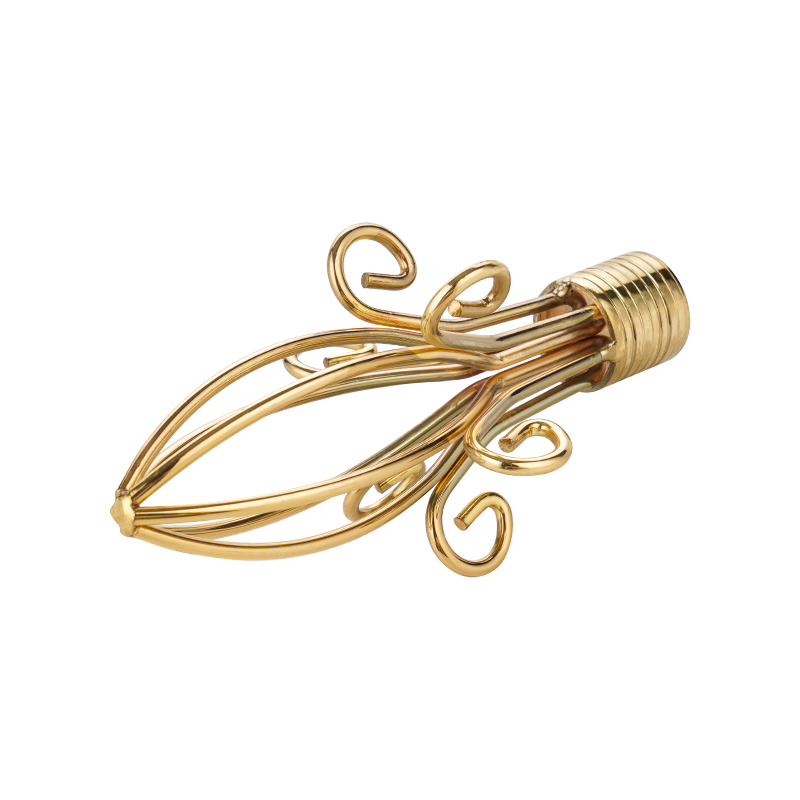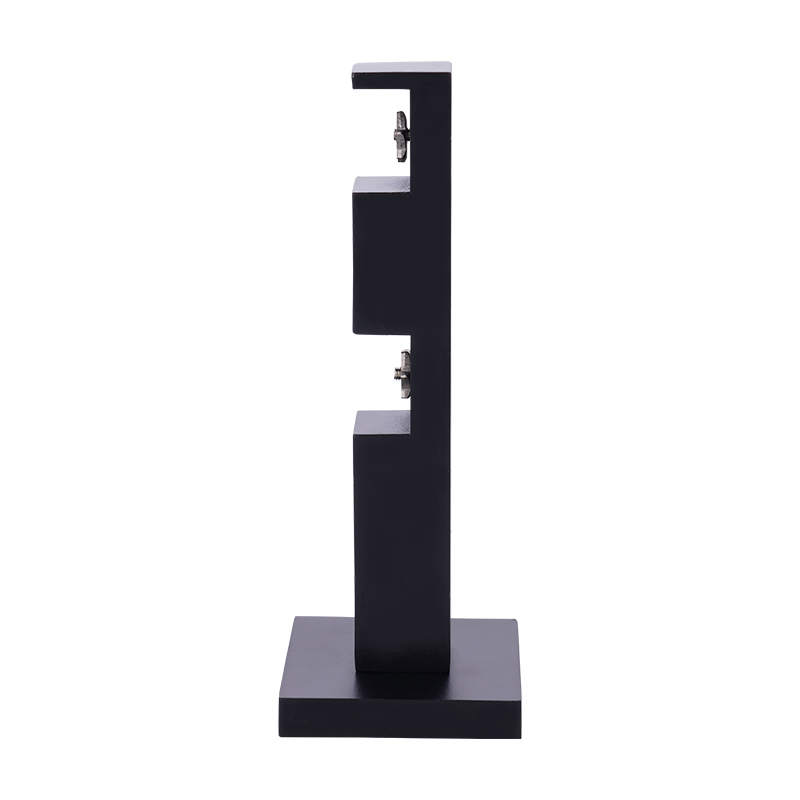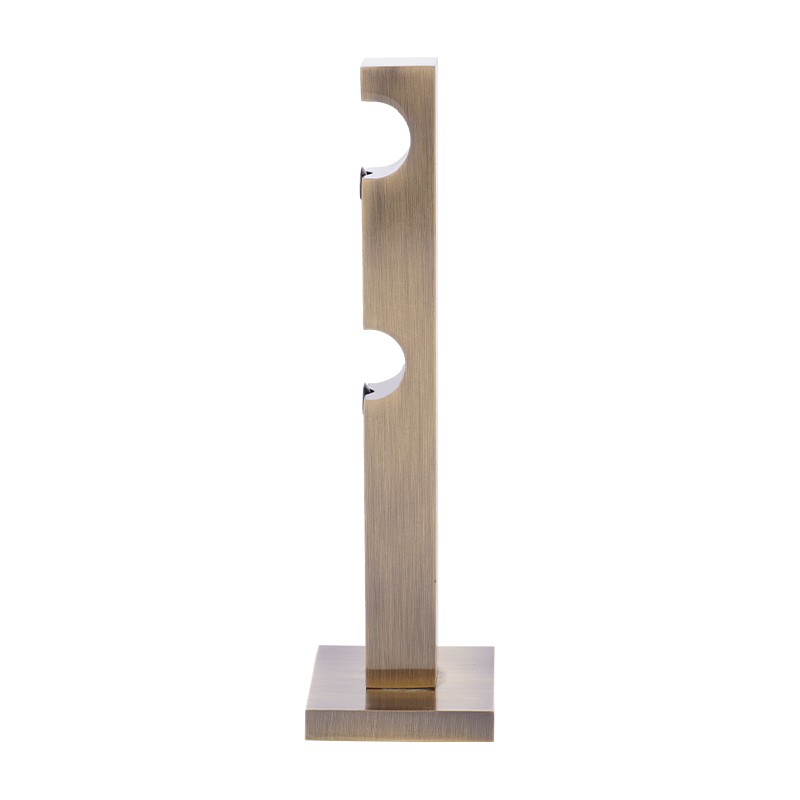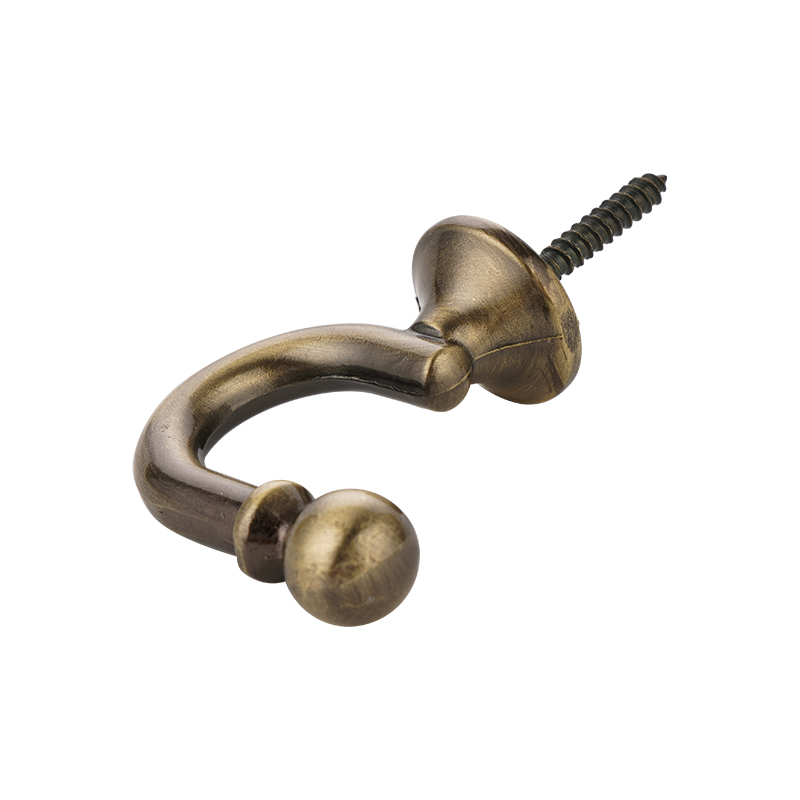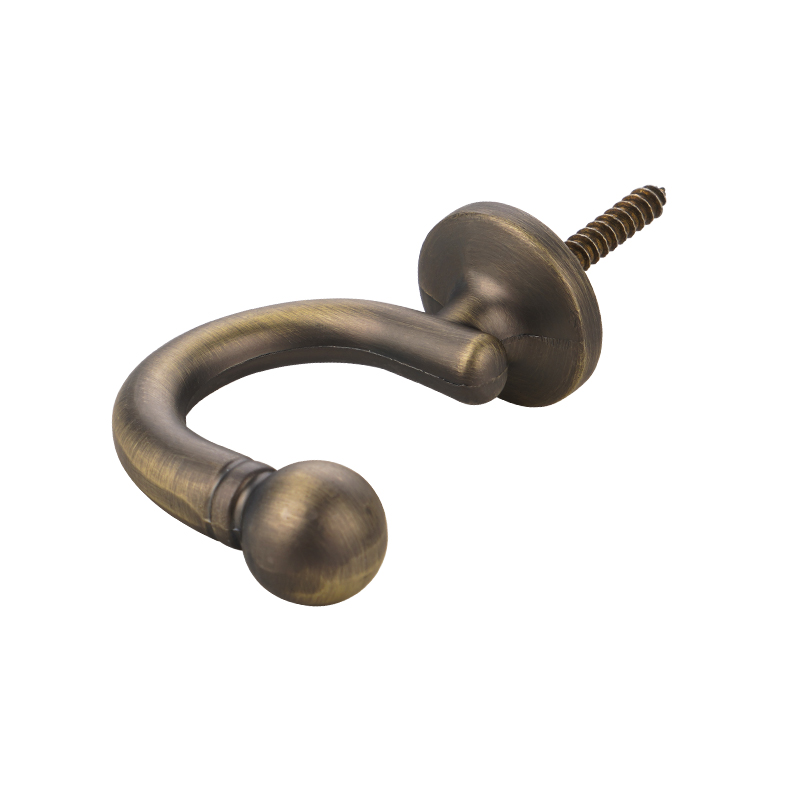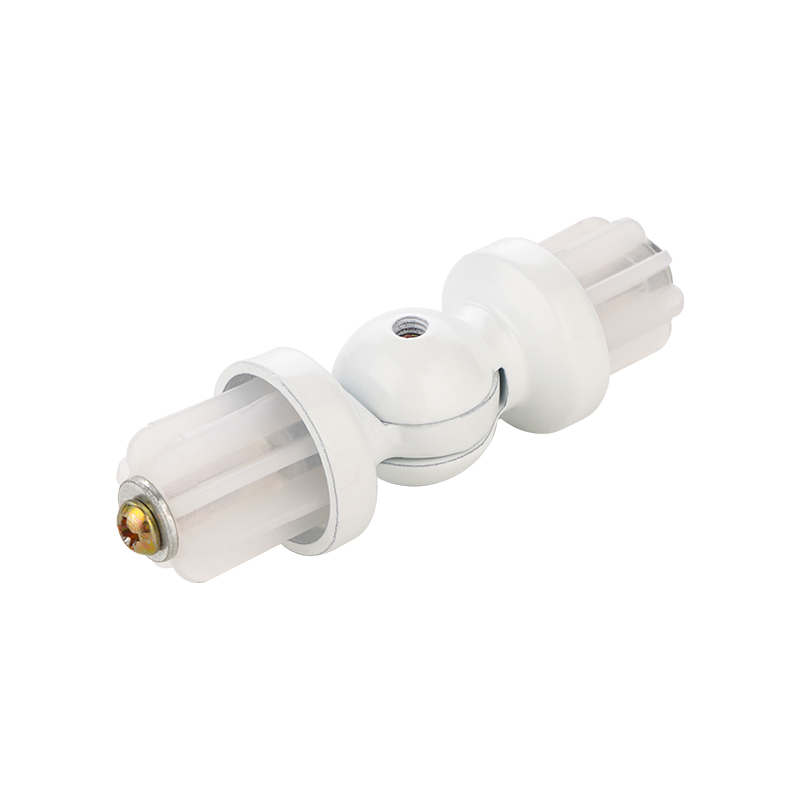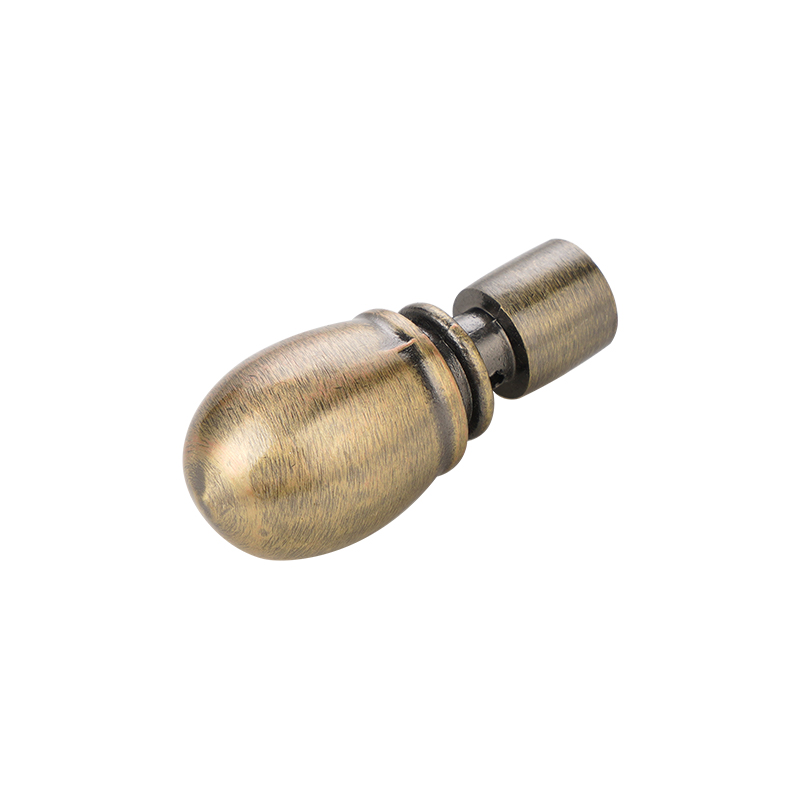Functional Role of Curtain Finials
Curtain finials are decorative yet functional end pieces that are installed at the ends of curtain rods. Their primary purpose is to act as a stopper, preventing curtain rings, hooks, or eyelets from slipping off the rod. This feature is particularly important when curtains are frequently opened or closed, as repeated movement can cause rings to slide toward the rod’s edge. Finials serve as a safety measure that keeps the curtain securely in place while also enhancing the overall aesthetic of the window treatment. Their role goes beyond decoration, providing both stability and usability in daily operation.
Mechanism Behind the Prevention of Slippage
The design of curtain finials incorporates a physical barrier that blocks rings or eyelets from exiting the rod. Typically, finials are slightly wider than the rod diameter, forming a secure end cap that halts any outward movement of curtain accessories. Depending on the rod type, finials may attach via threading, internal screws, or compression fittings. These attachment mechanisms ensure the finials stay firmly connected, even under the weight of heavy curtains. By maintaining their position at both ends of the rod, finials guarantee that the curtains slide smoothly within the designated range without detaching or falling.
Material Composition and Structural Stability
Finials are crafted from a variety of materials, each contributing to their strength, durability, and compatibility with different interior styles. Common materials include metal, wood, resin, glass, and plastic. Metal finials, such as those made from iron or brass, are particularly valued for their rigidity and long service life. Wooden finials offer warmth and versatility, while resin and plastic options are lightweight and suitable for smaller windows. The choice of material affects not only the decorative appearance but also the ability of the finial to resist wear or loosening during continuous use.
Table: Comparison of Common Curtain Finial Materials
| Material | Durability | Weight | Maintenance | Common Use |
|---|---|---|---|---|
| Metal (Iron, Brass) | High | Moderate to Heavy | Low | Heavy Curtains, Modern Interiors |
| Wood | Medium | Moderate | Moderate (Requires Polishing) | Classic or Rustic Settings |
| Resin | Medium | Light | Low | Decorative, Light Curtains |
| Plastic | Low to Medium | Very Light | Low | Budget-Friendly Solutions |
| Glass | Medium | Fragile | High (Careful Cleaning) | Decorative and Modern Designs |
Design Variations and Their Impact on Functionality
Curtain finials come in various designs, from simple spherical caps to intricate ornamental shapes. While design is often guided by aesthetic preferences, certain forms also influence functionality. Rounded or capped finials offer a smoother transition for curtain rings, preventing snagging or friction during movement. Angular or sculpted designs, while decorative, may require precise placement to avoid interference with curtain motion. Manufacturers balance style and practicality to create finials that not only enhance visual appeal but also maintain smooth usability and effective slippage prevention.
Attachment Methods and Their Importance
The method by which finials are attached to curtain rods is critical to their ability to prevent ring or eyelet slippage. Common attachment systems include screw-in, plug-in, or compression-based fittings. Screw-in finials are the most secure and are ideal for heavier drapery setups. Plug-in designs provide convenience and can be easily removed or replaced, while compression fittings rely on pressure to stay in place without additional tools. The choice of attachment depends on the curtain rod design, weight of the fabric, and frequency of use. A well-secured finial ensures long-term stability without the need for frequent adjustments.
Interplay Between Curtain Rings, Eyelets, and Finials
Curtain rings and eyelets move along the rod to allow the curtain to open or close. Without finials, these accessories could easily slide off during movement, especially when the curtain is drawn forcefully. Finials create a defined endpoint that protects both the curtain and the rod from accidental detachment. The inner diameter of rings or the size of eyelets must be slightly larger than the rod but smaller than the finial’s base to ensure smooth gliding without slippage. This careful proportioning is essential for maintaining consistent performance in curtain operation.
Factors Affecting Finial Efficiency
Several factors influence how effectively a curtain finial prevents slippage. The precision of installation, the tightness of attachment, and the alignment of the rod all contribute to functionality. If a finial is loosely attached or misaligned, it may rotate or detach under pressure, reducing its ability to block the rings. Environmental conditions such as humidity and temperature changes can also affect certain materials like wood, causing expansion or contraction. Regular inspection and proper installation ensure the finials continue to perform their function efficiently over time.
Maintenance and Inspection Practices
To ensure that curtain finials continue to perform well, periodic inspection and maintenance are recommended. Over time, vibration or movement can loosen screw-in finials, especially in high-use areas. Users should check for tightness and re-secure them if necessary. For metal finials, occasional cleaning prevents corrosion or discoloration, while wooden and resin finials benefit from gentle dusting or polishing. Avoiding excessive force when opening curtains helps reduce strain on both the finials and the curtain rings. Proper upkeep extends the lifespan of both decorative and functional components of the curtain system.
Common Issues and Maintenance Solutions
| Issue | Possible Cause | Recommended Solution |
|---|---|---|
| Finial Loosens Over Time | Frequent Movement or Vibration | Tighten Screws or Reapply Adhesive Thread Locker |
| Curtain Rings Catch on Finial | Irregular or Rough Design Edge | File or Smooth Edge, Apply Light Lubrication |
| Finial Detaches During Use | Incorrect Installation or Weak Fitting | Use Compatible Mount or Replace with Screw-In Type |
| Corrosion or Surface Damage | Moisture or Poor Cleaning Practices | Apply Protective Coating or Regularly Wipe Dry |
Balancing Decorative and Practical Functions
While finials are often chosen for their decorative value, their functional role in curtain safety and usability remains fundamental. Manufacturers design them to achieve harmony between appearance and performance. A well-designed finial complements the interior style while providing a dependable barrier that ensures the curtain stays on the rod. Modern designs incorporate materials and shapes that match various décor themes, from minimalist metal finishes to elaborate carved wood. The key lies in selecting a finial that not only fits the aesthetic of the space but also matches the operational needs of the curtain system.
Compatibility with Different Curtain Rod Systems
Curtain rods come in a range of configurations, including single rods, double rods, and extendable types. Finials must be compatible with these systems to function effectively. On double rods, finials are typically installed only on the outer rod to prevent interference with the inner layer. For extendable rods, finials are designed to accommodate the adjustable ends without impeding extension or retraction. Manufacturers often provide specific finial models tailored to different rod diameters and connection mechanisms. Selecting compatible components ensures seamless performance and a cohesive appearance.
Impact on Curtain Aesthetics and Design Continuity
In addition to their mechanical function, finials contribute significantly to the visual coherence of window treatments. Their shape, color, and finish can accentuate the overall design theme of a room. Minimalist finials with smooth finishes are suitable for modern interiors, while ornate or carved designs complement traditional or classical settings. Consistency in design between the rod, finials, and curtain fabric enhances the overall aesthetic harmony. Thus, finials play a dual role—ensuring operational reliability while serving as a design element that ties together multiple decorative features within the space.
Innovations in Finial Design and Manufacturing
Advancements in manufacturing technology have led to new innovations in curtain finial production. Modern techniques such as CNC machining, resin casting, and 3D printing enable the creation of intricate shapes with high precision. Additionally, the use of surface coatings and treatments improves resistance to wear and corrosion. Some contemporary designs integrate magnetic or quick-release attachments for easy installation and maintenance. These developments provide users with more choices, allowing them to select finials that combine functionality, durability, and ease of use without sacrificing aesthetic appeal.
Safety Considerations in Finial Design
Safety is another important factor in the design of curtain finials, particularly in households with children or pets. Sharp or pointed designs can pose a risk of injury if placed at accessible heights. To mitigate this, many modern finials feature rounded or soft-edged profiles. Additionally, secure attachment prevents accidental detachment, which could lead to falling components. The use of non-toxic materials and coatings further enhances safety in domestic environments. These considerations ensure that finials fulfill both decorative and protective roles within residential and commercial spaces.
Longevity and Replacement Practices
Over time, finials may require replacement due to wear, discoloration, or changes in interior design preferences. Regular assessment helps determine when replacements are needed to maintain both appearance and functionality. Because most finials are designed for easy removal, replacing them is a straightforward process that does not require specialized tools. Selecting replacements with the same attachment type and rod compatibility ensures seamless installation. Periodic updates to curtain hardware can refresh the overall look of a room while maintaining the practical advantages of the curtain system.
Conclusion of Functionality and Design Relevance
In summary, curtain finials play an essential role in preventing curtain rings and eyelets from slipping off rods while also serving as decorative accents. Their effectiveness depends on appropriate material selection, secure attachment, and compatibility with the curtain rod system. Through thoughtful design and proper maintenance, finials contribute both to the functional reliability and the visual appeal of window treatments. Whether simple or elaborate, these small components ensure that curtains remain stable, safe, and aesthetically cohesive in various interior environments.
